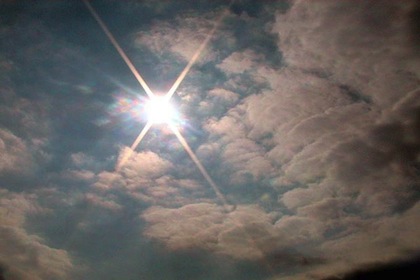
Raising Your Vitamin D Level to 40 Ng/Ml May Slash Your Cancer Risk by 67 Percent
Have you checked your vitamin D status lately? Ideally, you want to maintain a vitamin D level of 40 to 60 ng/ml year-round. Based on mounting research, 40 ng/ml appears to be the “magic” number at which a whole host of health benefits are reaped.
April 18, 2016 | Source: Mercola | by Dr. Mercola
Have you checked your vitamin D status lately? Ideally, you want to maintain a vitamin D level of 40 to 60 ng/ml year-round. Based on mounting research, 40 ng/ml appears to be the “magic” number at which a whole host of health benefits are reaped.
Vitamin D deficiency has been linked to a variety of illnesses,1 including heart disease, stroke, hypertension, autoimmune diseases, type 1 and type 2 diabetes, rheumatoid arthritis, Crohn’s disease, multiple sclerosis, cognitive decline, Alzheimer’s disease, infectious diseases, and several deadly cancers.
This includes cancers of the breast, colon, prostate, ovaries, esophagus, lymphatic system, and even melanoma.
Vitamin D Lowers Overall Mortality Risk
It’s no surprise then that the Institute of Medicine (IOM) reports an association between vitamin D and overall mortality risk.2 In one 54-month long study3 involving more than 422,800 healthy adults, those who were most deficient in vitamin D had an 88 percent increased risk of death from any cause.
This is the kind of benefit I’m talking about when I say it would be wise to temper fears of melanoma—the deadliest form of skin cancer—and weigh that risk against other benefits, such as a significantly reduced risk of death from any disease.
Moreover, by adhering to sensible sun exposure guidelines and making sure you do not get burned, you can maximize your benefits and minimize the risks of skin damage that could lead to skin cancer. On the whole, overexposure, not avoiding all sun exposure, is the real problem when it comes to raising your risk for skin cancer.4
Please Read This Important FTC Article!
In a highly controversial action last week, the FTC had me stop selling our UV light systems which they classified as tanning beds but I was providing as a far more effective option for vitamin D to the hundreds of millions of people who don’t have access to enough sunshine.
The legal battles with the FTC lasted a few years and required me to travel to Washington DC to meet with the FTC attorneys to work through these issues. I finally chose the lesser of all the evil options that were available to me.
If you have not yet read my detailed rebuttal to the FTC’s action against me please do so now and let me know what you think about this important health freedom threat. I really am interested in hearing what your thoughts are on this important issue. Your input on this means a lot to me, Thanks for taking the time to respond.
Higher Vitamin D = Lower Cancer Risk
Previous research found that a vitamin D level of 50 ng/ml was associated with a 50 percent lower risk of breast cancer.5 Breast cancer patients with an average vitamin D level of 30 ng/ml were also twice as likely to survive compared to women with low levels (average 17 ng/ml). 6
Most recently, researchers at University of California, San Diego School of Medicine report that raising your serum 25-hydroxyvitamin D (25(OH)D) to 40ng/ml can slash your risk of all invasive cancers by 67 percent..7,8,9
According to study co-author Cedric Garland, Dr.P.H.: 10
“We have quantitated the ability of adequate amounts of vitamin D to prevent all types of invasive cancer combined, which had been terra incognita until publication of this paper…
These findings support an inverse association between 25(OH)D and risk of cancer, and highlight the importance for cancer prevention of achieving a vitamin D blood serum concentration above 20 ng/ml, the concentration recommended by the IOM for bone health.”
Improving Vitamin D Status is a Key Cancer Prevention Tool
By pooling data from two previous studies—one randomized trial and one cohort study; the former of which showed a 77 percent lower cancer risk for women with a vitamin D level of 40 ng/ml compared to a baseline of 28 ng/ml11—they were able to get a much larger sample size with a broader range of vitamin D levels.
This allowed them to more accurately determine the ideal vitamin D level for cancer prevention. The study included ALL invasive cancers, with the exception of skin cancer, and had a follow-up period of nearly four years.
https://www.youtube.com/watch?v=8bXuN_4UeL0
